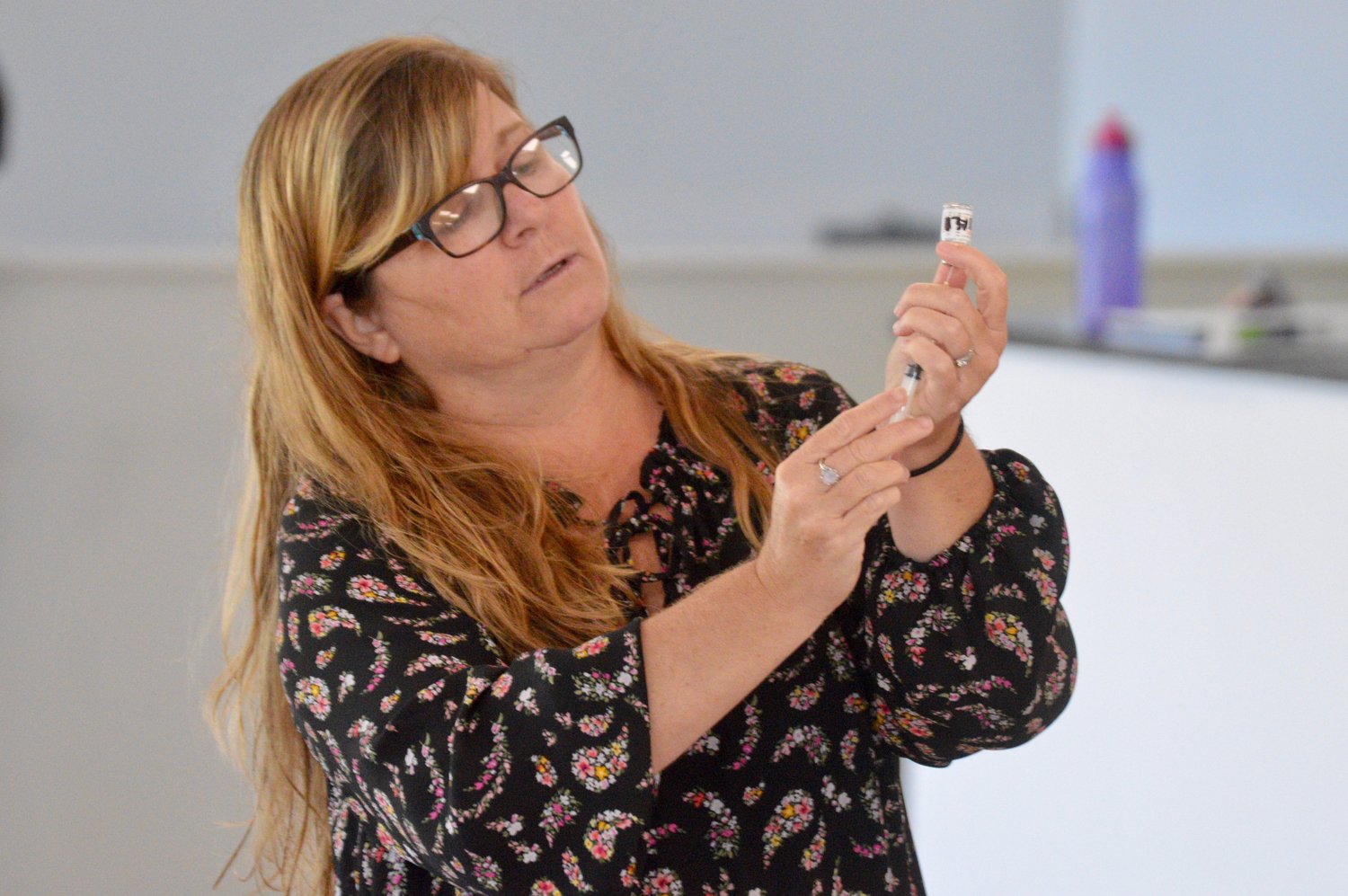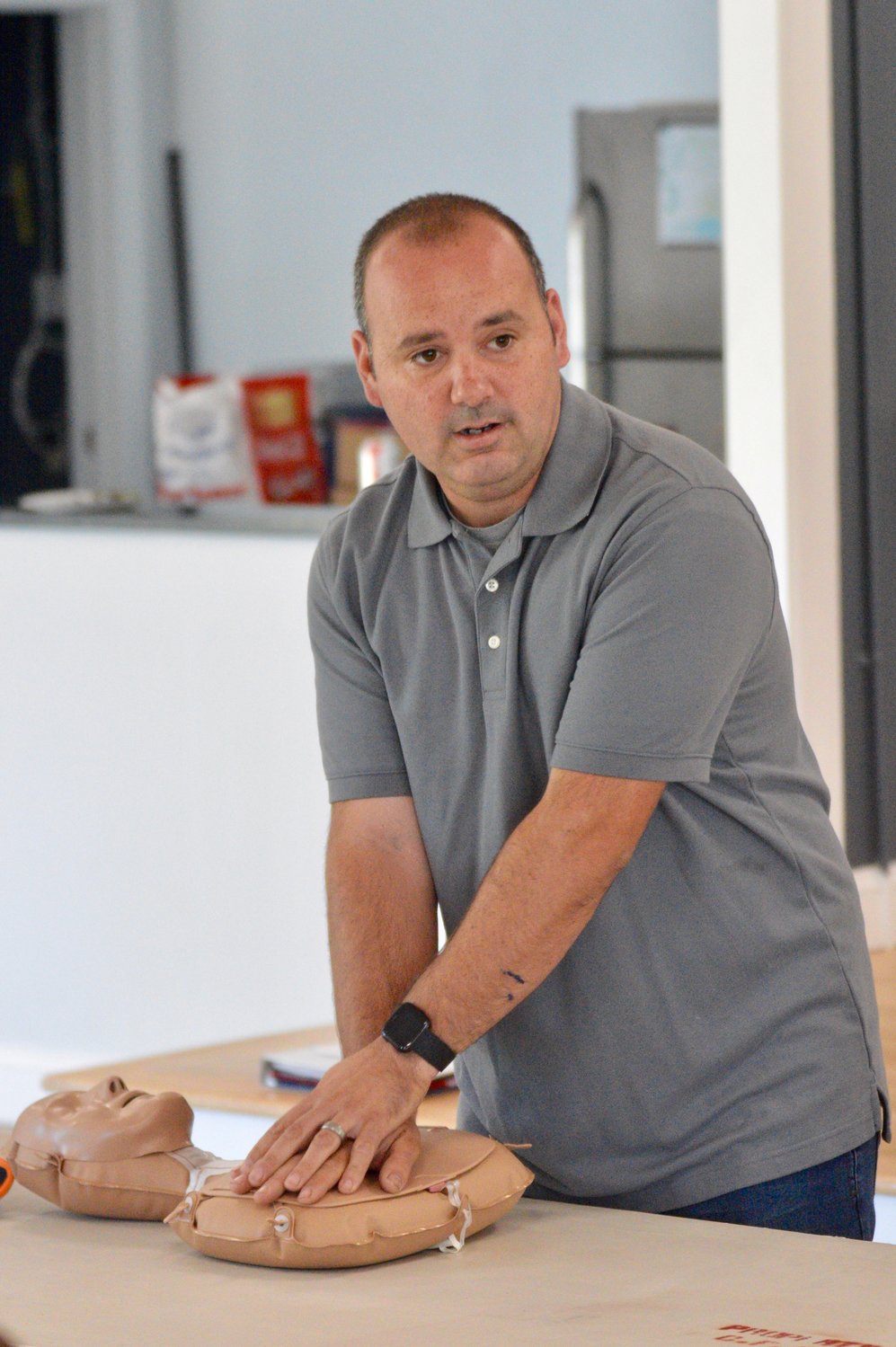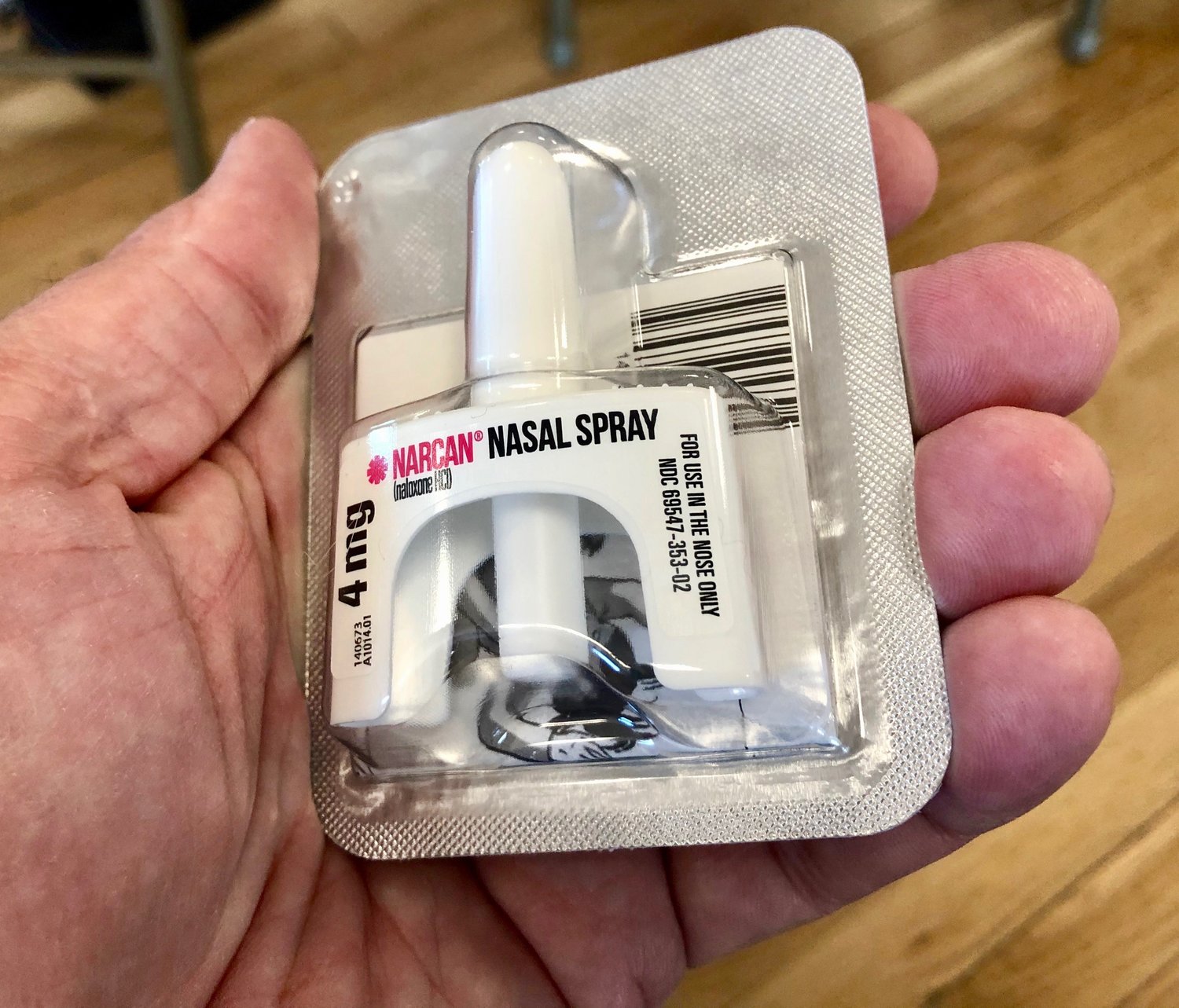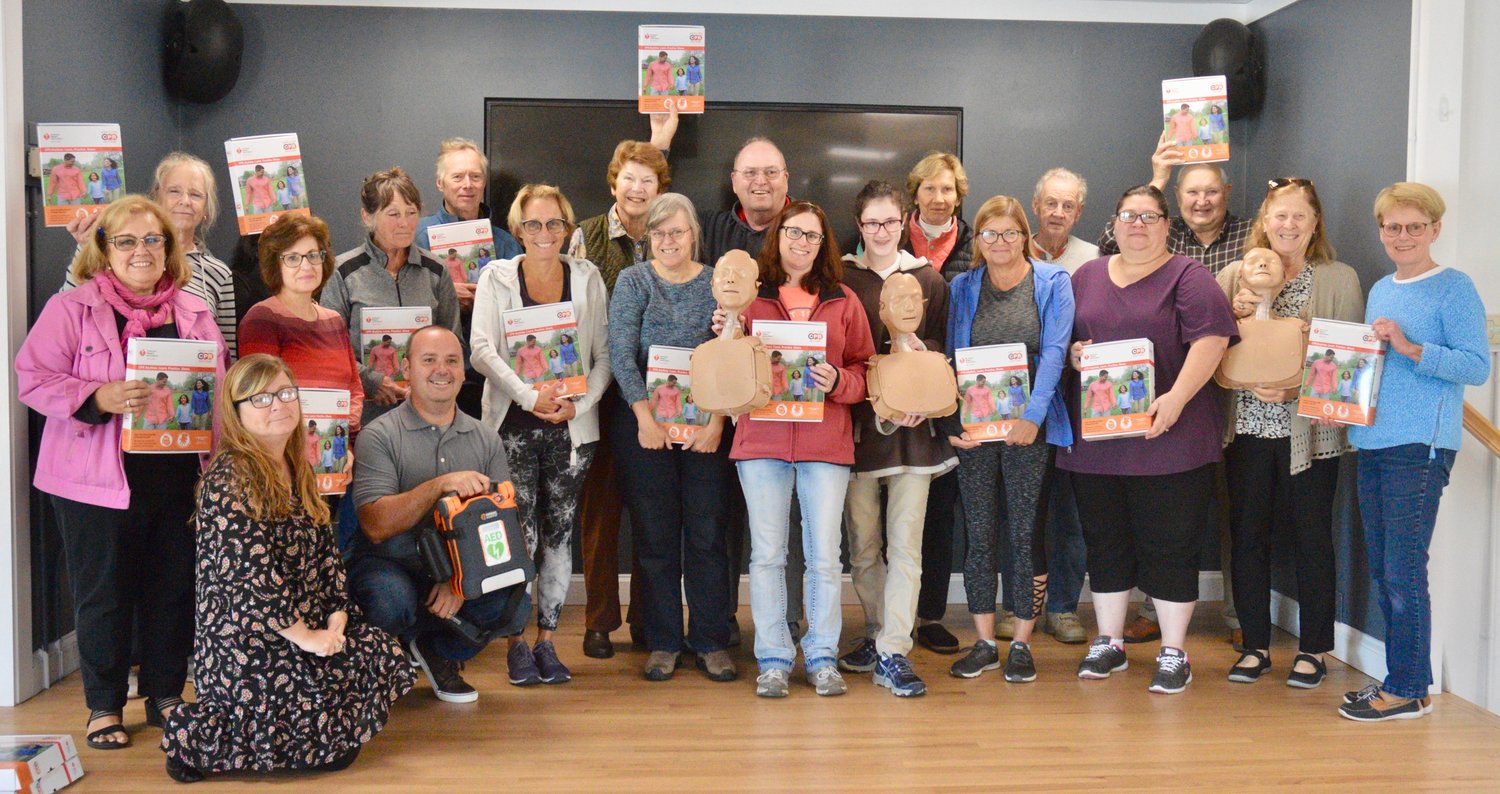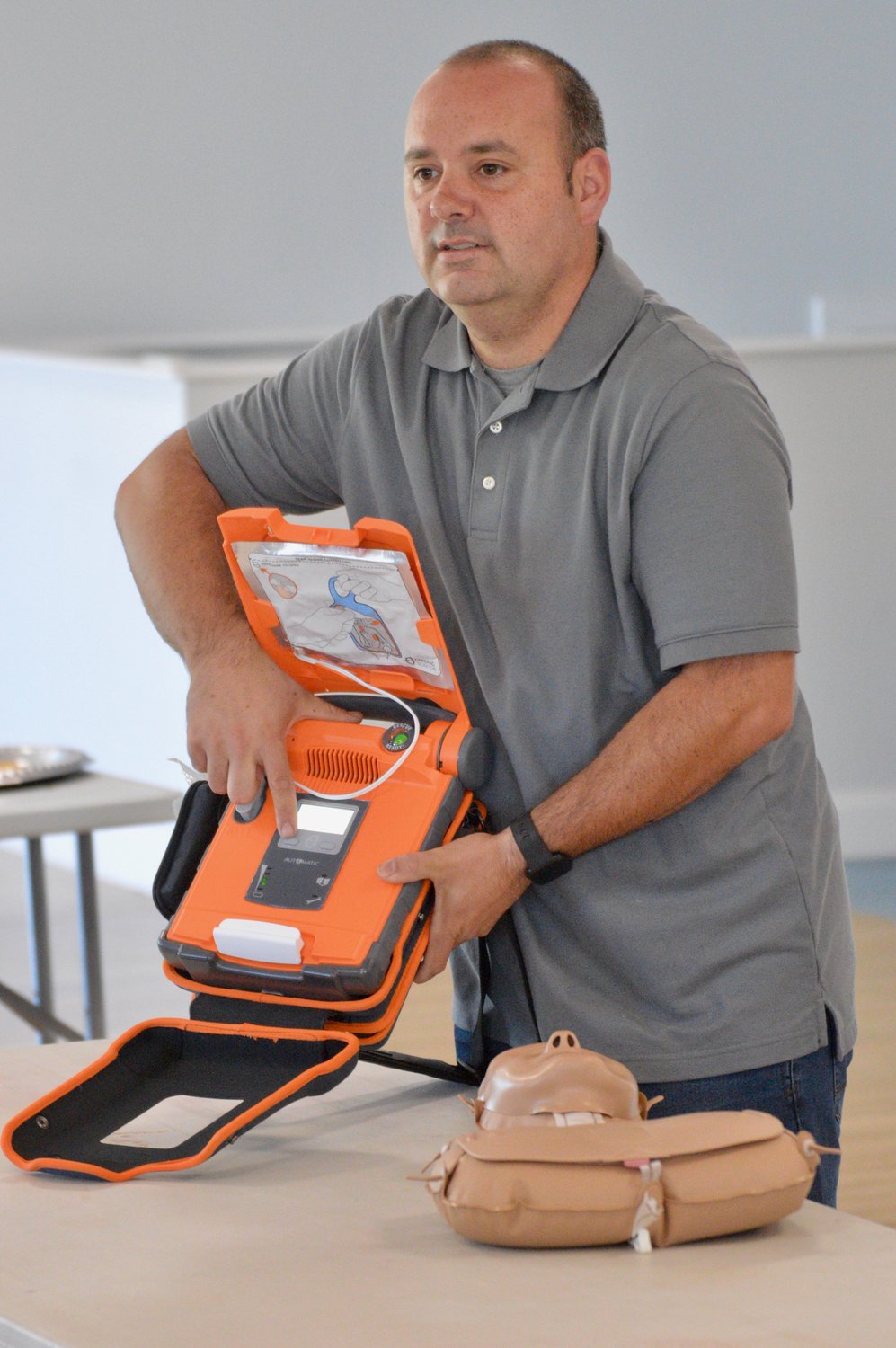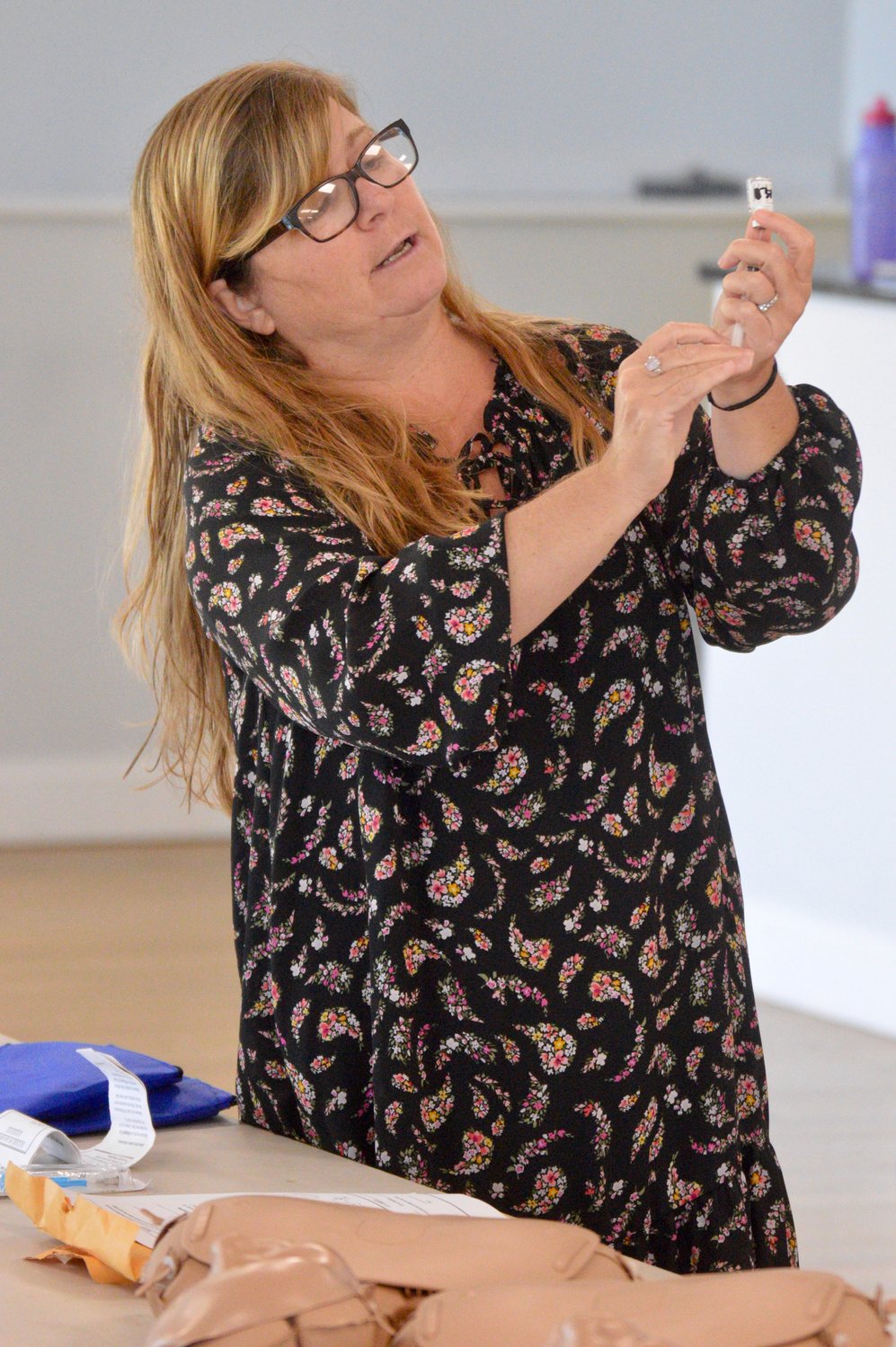- THURSDAY, APRIL 18, 2024
Naloxone workshop in Portsmouth targets opioid overdoses
More than 20 participants sent home with free kits
PORTSMOUTH — Upon leaving two workshops at the CFP Arts, Wellness and Community Center on Saturday, one participant said she had originally intended to stay for just the first, which …
This item is available in full to subscribers.
Please log in to continue |
Register to post eventsIf you'd like to post an event to our calendar, you can create a free account by clicking here. Note that free accounts do not have access to our subscriber-only content. |
Day pass subscribers
Are you a day pass subscriber who needs to log in? Click here to continue.
Naloxone workshop in Portsmouth targets opioid overdoses
More than 20 participants sent home with free kits
CFP Arts’ next workshop that focuses on substance abuse is a program called “Hidden in Plain Sight,” which is also funded by a grant from the Newport Prevention Coalition.
The program, which will run from 7-8:30 p.m. on Friday, Oct. 25, provides parents and other adults with information that can help them determine whether their child might be hiding the fact they are vaping, or experimenting with drugs or alcohol.
The inside of the hall will be set up as a teen’s bedroom, which participants can walk through and explore. Coalition member Polly Allen will guide them in finding clues that indicate possible drug or alcohol use, as room decor, hidden compartments and a variety of ordinary items that may be used to conceal use will be located throughout the room.
Participants will also learn how they can more effectively intervene when they think their children might be using drugs or alcohol.
For more information, e-mail pmatteson@cox.net.
PORTSMOUTH — Upon leaving two workshops at the CFP Arts, Wellness and Community Center on Saturday, one participant said she had originally intended to stay for just the first, which focused on cardiopulmonary resuscitation (CPR) techniques.
But after hearing all about naloxone treatment, she realized it wasn’t just for opioid addicts looking to get high, but for anyone prescribed pain pills — like her husband with lower back issues.
She stayed for the full program.
“Narcan isn’t just for saving the life of someone who’s using (opioids) recreationally,” Polly Allen of the Newport County Prevention Coalition told more than 20 people who attended the free naloxone administration workshop.
Everyone who attended the program took home a free kit that contained two doses each of Narcan nasal spray and a intermuscular injection. Twenty-five kits in all were funded by a Miriam Hospital grant that was facilitated by the Coalition.
Naloxone is a drug typically carried by first responders in the event of an opioid overdose. The medication is used to counter the effects of an opioid overdose, whether it be morphine, heroin or pain pills.
Prevention advocates such as Ms. Allen, however, are urging more families to keep a Narcan kit in their home or their car, and to learn how to administer the drug. Recreational opioid users aren’t the only ones whose lives could be saved through naloxone, she said.
“Some kids get into the medicine cabinets, or teenagers may be experimenting and they don’t know the risk,” Ms, Allen said.
Opioids trick your brain into breathing slowly, so someone who suffers from shortness of breath or asthma and who is taking prescription opioids could also be at risk of an overdose, she said. Many elderly people have been known to show up at emergency rooms after overdosing on prescription opioids, she added.
The intermuscular injection kit comes with step-by-step instructions on how to fill a syringe and administer the drug. She advised to administer naloxone on someone who is found to be “barely breathing or not breathing.”
After that, you would administer a series of “rescue breaths” for two to three minutes after pinching the nose and pulling the chin back, she said. (Full CPR would be necessary if there’s no pulse.) If there’s still no response, administer another dose of Narcan, she said.
The nasal spray Narcan — “A lot of people are not comfortable with the needle,” Ms. Allen said — is easier to administer. “It’s a very easy push, and that’s your dose. Don’t try it out before you use it, because that’s it,” Ms. Allen said.
When asked which method is more effective, Ms. Allen said the success rates are very similar if they’re both given properly.
D.J. Canario, a Portsmouth firefighter/EMT who presented his own workshop on basic resuscitation skills, said it’s OK to use Narcan if you’re not entirely sure someone has overdosed on opioids.
“That’s what I love about Narcan; it can’t hurt you,” he said.
Still, it’s important to still call 911 even if you have administered Narcan to someone, as the patient could overdose again. Mr. Canario said he once had a patient who overdosed three times in one day.
“They sign themselves out of the hospital so they can get high again,” he said.
For more information about overdose prevention and intervention, visit https://preventoverdoseri.org.
CPR, AED
Before Ms. Allen’s presentation, Mr. Canario led a workshop on basic lifesaving resuscitation skills.
He focused primarily on adult hands-only CPR, child CPR with breaths, adult and child choking relief, and AED awareness.
AEDs (automated external defibrillators) are portable electronic devices designed for laypeople that automatically diagnose and treat life-threatening cardiac arrhythmias.
Participants were able to take home kits with a Mini Anne CPR personal mannequin and replacement lung; a DVD with instructions for adult and child CPR; and a skills reminder card and mannequin wipes to use during the workshop and then take home to share with other family members.
Keywords
CFP Arts, Wellness and Community Center, Newport County Prevention Coalition, Common Fence PointOther items that may interest you

